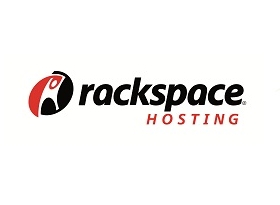Build a foundation for Rackspace Hosting
There is little doubt that cloud computing will be how most companies handle their data for the foreseeable future. Benefits of the cloud, like almost infinite scalability and on-demand access to resources, outweigh disadvantages that come with handing your data over to someone else to manage. A company still pondering whether to take advantage of cloud computing should realize that competitors have probably already made the switch, and are offering a better product to their customers as a result.
Of course, creating a cloud-based solution is a lot more complicated than most people realize. Before you embark on your journey into cloud computing, it’s best to build a foundation of knowledge about what the cloud can do for you, and what you need to know before you make the switch.
Rein in expectations.
Right now, the cloud is marketed as some kind of magical world where server loads disappear, IT costs evaporate and websites have 100 percent uptime. While the cloud can help handle traffic spikes, save money and keep your resources available, the hardware still exists in the real world and occasionally has real-world problems. If you are going to be successful in the cloud, then you need a good idea of what you want to get out of it. Having an understanding of your main goal, whether it be API control, lowering costs, instant scalability or a host of other cloud benefits, can help you get a solution tailored to that goal, ensuring that you get the most out of your cloud experience.
Understand utility pricing and scalability.
The concept of utility pricing is one of the cloud’s most popular features, and is basically just a way of saying that you only pay for the resources that you actually use. This way, if you experience a sudden spike in demand, your resources can spin up to handle that demand and then spin down to save you money once the rush is over. Of course, the down side is that if you scale up your systems and then leave them up, or if you scale them up to handle traffic that doesn’t result in increased sales, you could be left with a large bill and little to show for it.
Get a grasp on your industry compliance.
The nature of cloud computing has you take your data and offload it onto centralized servers controlled by your cloud provider. This means that you may run afoul of certain data privacy and security regulations, depending on your industry. Now, cloud providers are generally pretty good at understanding how to protect data and ensure regulatory compliance, but no one will know your specific data security needs like your legal department; so it is imperative that you get their input so you understand which cloud options are simply off the table.
Do you need a developer?
A cloud solution often takes your existing server configuration and expands it across several virtual servers, which allows for the scalability that the cloud is known for. Most major cloud providers are proficient in all of the core technologies when it comes to Web hosting; but if you have any additional services built on third party platforms, the cloud provider may not be able to make those services scale with your core services. The only way around this issue is to either ditch those services—which is often an impossible proposition—or contract with a developer to enable those systems to work in the cloud, which is often an expensive proposition.
Have a testing game plan.
Testing may be one of the most overlooked aspects of the cloud, most likely due to the outlandish claims made by some cloud providers and proponents. However, a proper load testing regimen can not only tell you where the system’s breaking point is, but can also give you insight into areas where you may need to focus to improve performance. The cost of the load testing will easily be offset by allowing you to avoid potential downtime.
Consider starting small, even if you want to go big.
With all that cloud computing can do for your business, you may be ready to jump in with both feet, but a little hesitation may save you big headaches later on. Even if you have a cloud adoption team working with you, each cloud migration is a little different and turns up some slightly different issues. Instead of turning your entire operation over to the cloud, consider adopting cloud computing for a small part of your organization. Then, the inevitable hiccups can be handled without risking your business, and once the cloud is working well in one area, expanding it to the rest of your business is much less complicated.
